Human activity such as hunting, deforestation, and the expansion of civilization has driven wild animals closer to our homes. Among said animals is the coyote, a North American canine species closely related to but smaller than wolves.
With coyotes encroaching upon human territory, is it time we started befriending them? Should we take them home with us to meet our families, including our other animal companions?
Should we make coyotes our pets?
That’s a big, fat NO. Keeping a coyote on your property is a recipe for disaster. Unless you’re an expert on wild animals or prepared for blood and possibly even death, we highly recommend not going anywhere near coyotes. These creatures are feral and unpredictable, making them terrible pets.
Want to know the ins and outs of why coyotes don’t make good pets? Then keep reading!
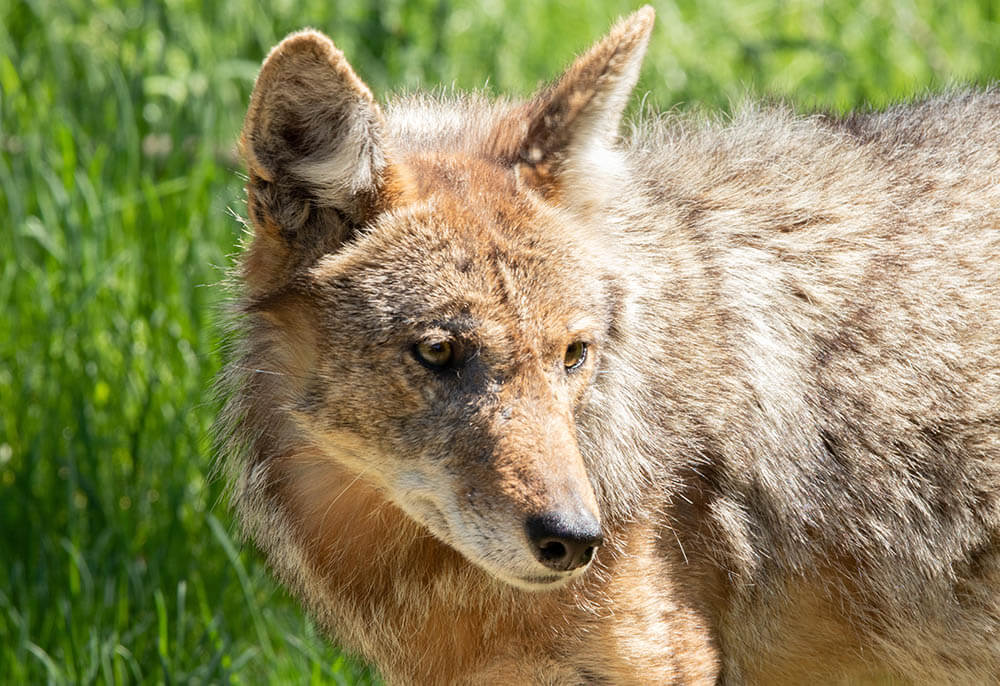
7 Reasons Why Coyotes Make Bad Pets
Why do coyotes make bad pets? Let’s find out, shall we?
1. Coyotes are wild animals
Grabbing a mature coyote from its natural habitat and keeping it as a pet is a recipe for disaster. If you insist on owning a coyote, the best thing to do is to raise one from puppyhood and start training it early. Keep in mind, however, that this won’t truly tame your exotic animal. This is because, unlike dogs, coyotes haven’t benefited from thousands of years of domestication. This means coyotes remain savage creatures that are still largely subject to their wild nature.
Feral animals are more likely to behave in vicious and destructive ways whenever they feel threatened. Is the loud music coming from your neighbor freaking your pet coyote out? It may start gnawing on the furniture to relieve itself of stress. Did you invite dozens of friends over for a party? It may perceive all strange humans as potential predators and bite anyone who gets close enough to touch it.
In addition, you’ll have an exceedingly tough time training a coyote, so expect your pet to pee and poop anywhere it likes on your property. Say goodbye to your dreams of having it do tricks such as play dead and roll over, as well.
2. Coyotes can hurt humans and pets
Coyote attacks are rare, but that’s no excuse to keep one as a pet. Between 1960 and 2006 in the U.S. and Canada, researchers have identified 142 cases of attacks on humans. Of the 159 victims, three were killed.
37% of these attacks were predatory, meaning the canines set out to kill and eat humans. 22% were investigative. While adults and children were equally victimized, most of the predatory attacks were on children.
Thankfully, coyotes are generally shy creatures that would rather avoid than interact with us humans. Another reason for the rarity of coyote attacks is the fact that these canines prefer hunting at night, which reduces the occurrences of our two species crossing paths.
Humans aren’t the only ones who’ve fallen victim to coyote attacks. Between 1990 and 2004, coyotes attacked 70 dogs. Coyotes tended to attack and kill smaller breeds, with the most commonly victimized breeds including Yorkshire Terriers, Shih Tzus, and Jack Russell Terriers. However, researchers also recorded lethal assaults on larger breeds such as Labrador Retrievers.
Researchers also found 10 reported attacks on cats.
3. Coyotes don’t do well with other pets
As discussed above, coyotes tend to attack and kill pet dogs and cats, which is going to be a problem if you decide to take one of these wild animals home.
Coyotes are dominant creatures, and taking one home won’t change that. If a coyote is forced to share space with pets, its instinct to rise to the status of alpha will push it to bully others into submission. Any creature that refuses to acknowledge its authority can end up getting seriously hurt.
Coyotes are also territorial; if your exotic pet feels another creature is trying to steal its territory, it can get violent.
Not to mention coyotes are apex predators that feed on all sorts of critters – particularly those smaller than them. If you have a cat, small dog, hamster, or any of the like, a coyote will immediately see them as prey to be murdered and consumed.
If you want to keep a coyote, it’s best not to have any other pets; even getting a second coyote to accompany the first could lead to trouble as both will likely vie for dominance and territory.
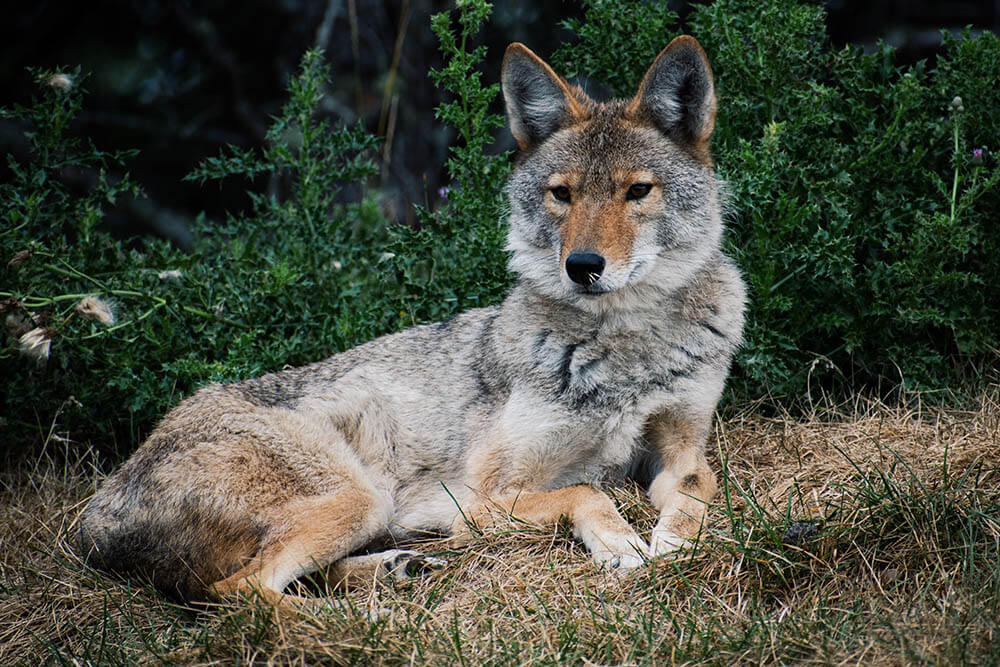
4. Coyotes have special needs
Coyotes are highly energetic animals that need lots of activity to stay physically and mentally stimulated. The lack of such activity can lead to rambunctious, destructive, and potentially dangerous behavior.
Dogs also need activity, which explains why it’s essential to walk them daily. Can we walk coyotes too?
No, we can’t. Coyotes value their freedom and will hate being put on a leash. And as they tend to see people as their competitors for food and pets as either enemies or prey, you can expect your captive coyote to act aggressively toward any human, dog, or cat you encounter on your walk. No matter how “well-trained” your exotic critter is, its natural behaviors are extremely likely to emerge every time it feels threatened.
In short, you can’t take a coyote to a dog park or any other pet-friendly location. There are other ways to meet its needs for physical and mental stimulation, however, which brings us to…
5. Coyotes need lots of space and a special enclosure
A coyote belongs in its natural habitat – typically a large open area such as a desert or prairie. Coyotes enjoy a home range with a diameter of around 9.7 kilometers or 6 miles. Males can travel even farther (20 to 42 km) when searching for a mate or attempting to start a pack.
Does this mean your coyote’s enclosure needs to be 6 miles wide? Not necessarily. But you do need land measuring a minimum of 1.5 acres to keep your exotic pet happy.
For this reason, don’t expect a coyote to enjoy being cooped up in a tiny apartment or even a huge yard. It needs ample space to roam so that it can get the physical exercise it needs to release its pent-up energy; otherwise, it could start destroying your property or even attempt to escape. You’ll also need to provide it with activities that satisfy its desire to hunt, so give it sturdy toys to play with and hide its food in various locations within its enclosure.
Don’t forget that this enclosure needs to come with high, sturdy walls – around 5 to 6 feet tall and with no footholds that’ll allow your pet to climb it. A metal apron 12 inches or longer also needs to be buried beneath the fence to prevent your coyote from digging its way to freedom.
A simple wooden or chain-link fence won’t do; a coyote can easily destroy or dig underneath this to escape.
6. Coyotes need to be well fed
All pets need to be well fed, but you have an additional incentive to ensure your coyote eats every day.
If your coyote goes hungry, it will start looking for other sources of food, and by that we mean your other pets. Want to keep your dog, cat, ducks, or chickens safe? Feed your coyote at least twice a day, and make sure they eat 1.3 pounds of food or more daily.
Of course, there’s the issue of what you’re supposed to feed a coyote. You can’t just give it dog food or the same food over and over again; as feral animals, coyotes evolved to require nutrients found in a wide range of prey, vegetables, and fruits. In other words, variety is key!
In the wild, coyotes consume large mammals such as moose, white-tailed deer, and bighorn sheep; small mammals such as rodents, rabbits, and hares; birds like doves and pigeons; and other foods including reptiles, lizards, amphibians, insects, fish, and crustaceans. You’re going to have a hard time simulating this kind of diet at home!
7. Coyotes can carry and spread diseases
Coyotes are known carriers of serious diseases such as distemper, canine hepatitis, and rabies. They can spread these diseases not only to other animals but also to humans.
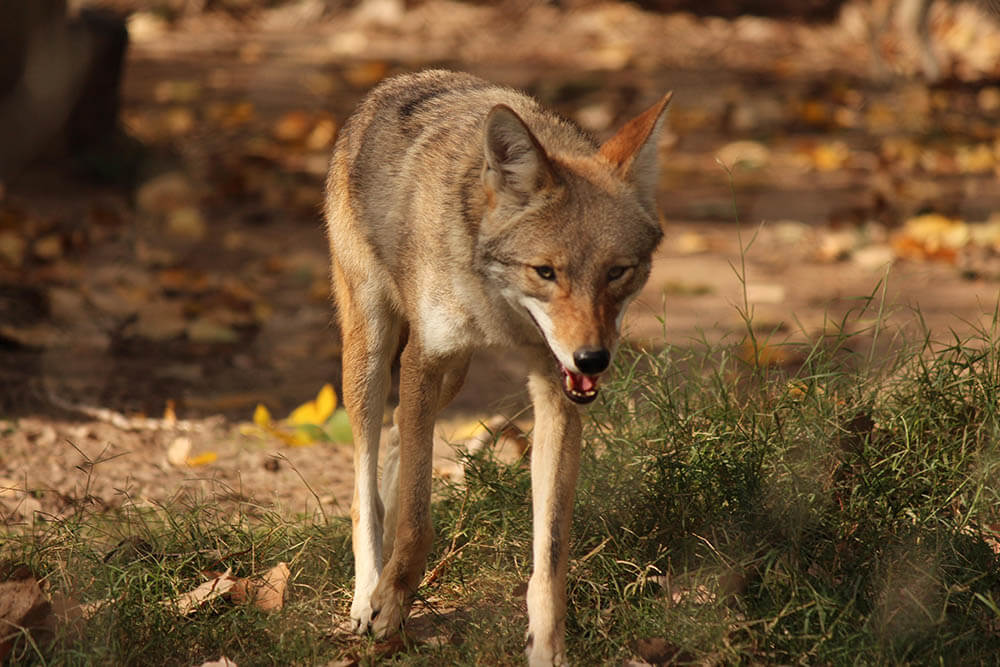
The Legality of Coyote Ownership
You’re not allowed to keep a pet coyote in a majority of U.S. states. These states consider these animals just as dangerous as tigers, jaguars, and lions.
In addition, coyotes are an invasive species in urban and suburban regions; if your pet escapes its enclosure, it can feed on the local wildlife and upset your area’s ecosystem, creating a domino effect resulting in massive declines in various animal populations.
The U.S. states that allow coyote ownership include Arkansas, Florida, Indiana, Michigan, Missouri, North Dakota, Oklahoma, Pennsylvania, Texas, Virginia, and Wyoming. However, many of these states will need you to meet special requirements, such as permits and documentation, before they can allow you to keep an exotic animal. You’ll also have to prove you can take proper care of such animals. All this will cost you ample time, money, and effort.
Should You Befriend Wild Coyotes?
Coyotes are wild animals that won’t hesitate to attack not only when they’re threatened by your presence but also when they feel you’re competing against them for resources. However, they look so much like man’s best friend that it’s tempting to befriend one that comes anywhere near you. Keep in mind that this is a terrible idea.
As we encroach into their territories, coyotes become bolder and bolder when it comes to encroaching into ours. This is one of the major reasons why we’re seeing increasing numbers of coyote attacks on people and pets.
The more we befriend these coyotes, the more confident they grow that we’re not a big threat to them. And the less dangerous we seem, the more they’ll keep exploring urban and rural areas in search of prey. This is why we’ve seen a surge of attacks in recent years, and why there are now incidents of these animals raiding trash bins, stealing pets’ food, and hurting dogs, cats, and even children.
For these reasons, we recommend not being friendly toward any coyote you come across in your neighborhood or elsewhere that isn’t their natural habitat.
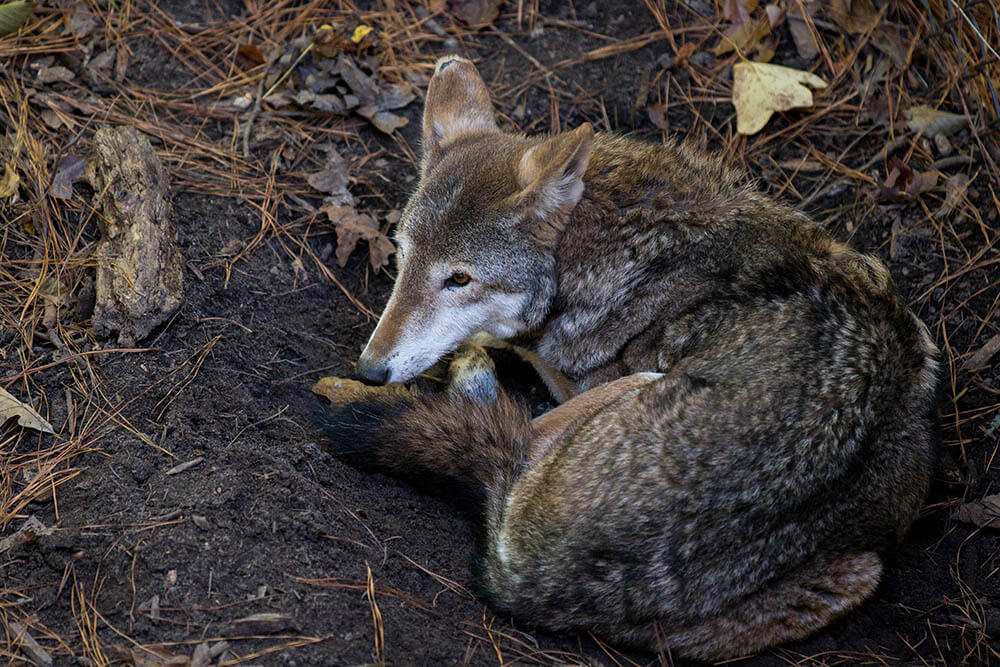
6 Tips on Avoiding Conflicts With Coyotes
If you want to reduce the risk of getting bitten by a wild coyote, we suggest keeping the following tips in mind.
1. Don’t feed them
Feeding a wild coyote can make it lose its fear of humans, thereby encouraging it to keep returning to your area to look for food. Over time, it may start testing people and even pets as potential prey, increasing the likelihood of an attack. For this reason, never feed wild coyotes intentionally.
Avoid feeding wild coyotes unintentionally, as well, so limit their access to your garbage cans and compost piles lest they become food sources for them.
Don’t leave any pet food out overnight as its scent can attract wayward coyotes. If you leave any food outside for stray cats, bring any leftovers inside the house once they’re done feeding. Clean bird feeders so that they don’t attract squirrels, which in turn can lure coyotes to your home.
2. Don’t let your pets run loose
There’s a good chance coyotes prowl close to where you live. This means any pets that are allowed to roam the neighborhood freely are at risk of getting killed by a coyote.
When walking your dog or taking them to any area that isn’t protected by a barrier, make sure they’re leashed. This will prevent them from straying too far from you and getting attacked by a coyote.
Never leave your pets unattended when they’re outside your house, even if they’re just in the backyard. Unless you have high walls, a coyote could break into your property and hurt your pet.
Domestic cats should be kept indoors as much as possible.
3. Use fencing and repellents
Protect your home from a coyote invasion by having a tall fence built around it or the yard. A six-foot fence featuring a roll bar along the top should do. Other repellents include noise-making devices and remotely activated illumination.
4. Don’t create unnecessary conflict
Don’t go out of your way to aggravate a coyote. If one in your area is doing its best to avoid people, don’t approach and/or harass it. Instead, give it the respect due to any living creature trying to survive.
5. Don’t run from them
Running from a hostile coyote will trigger its prey drive, encouraging it to give pursuit. Instead, assert your dominance to remind it that you’re a dangerous threat it had best back away from.
If a hostile coyote approaches you, you should do a combination of yelling at it, waving your arms, and throwing objects at it. If you have an item that makes noise, use it. For example, shaking a can full of rocks has proven an effective coyote deterrent. While maintaining eye contact with the creature, slowly remove yourself from the area without turning your back to it.
6. Report fearless, aggressive coyotes as soon as possible
Many towns have protocols to deal with dangerous wild animals. Therefore, if you encounter a coyote that displays aggression toward or shows no fear of humans, immediately report it to the appropriate officials, such as your area’s police department or animal control.
Signs of aggression are similar to those displayed by domestic dogs, such as unprovoked growling, snarling, agitated barking, raised hackles, and lunging.
Fun and Quick Coyote Facts
It’s time to expand our knowledge of coyotes!
- The scientific name for coyotes is Canis latrans, which is Latin for “barking dog.”
- Coyotes are between 32 and 37 inches long and stand 16 inches tall.
- Coyotes weigh 30 to 40 pounds.
- In the wild, the coyote lifespan ranges from 10 to 14 years.
- When pursuing prey, coyotes can run up to a maximum of 42.8 miles per hour.
- The coyote coat varies from red to brown to grey.
- Coyotes are omnivorous, which means they eat meat as well as vegetation.
- As territorial creatures, coyotes use their urine to mark their area.
- As monogamous animals, coyotes mate for life.
- Coyotes typically have between 5 and 7 puppies. Both parents care for their offspring.
- Once a coyote pup is six months old, it will start hunting alone.
- A coyote group is called a pack.
- Coyotes are exceptional swimmers.
- Coyotes can breed with domestic dogs and wolves.
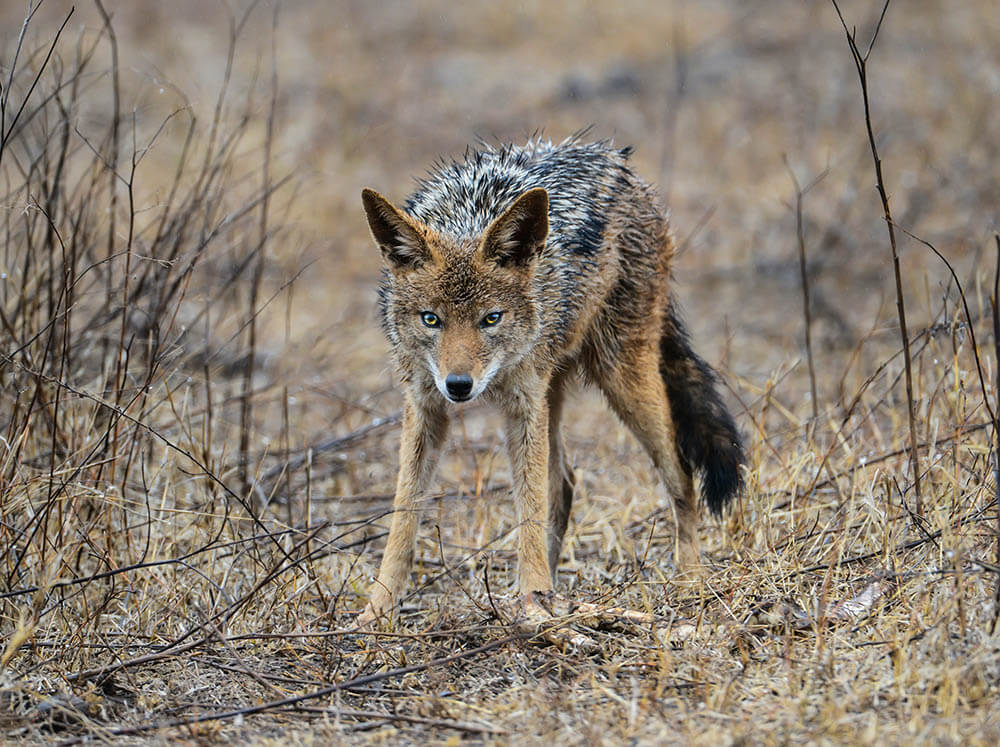
Conclusion
Coyotes make terrible pets. They’re dangerous wild animals capable of hurting humans and pets. They require plenty of exercise, lots of space, and an enclosure that’ll simulate their freedom in the wild while preventing them from escaping. And of course, they need to be well-fed lest they start snacking on your pets.
Do yourself and coyotes a favor; let these amazing creatures roam free in their natural habitat where they belong, and get yourself a domestic dog!
